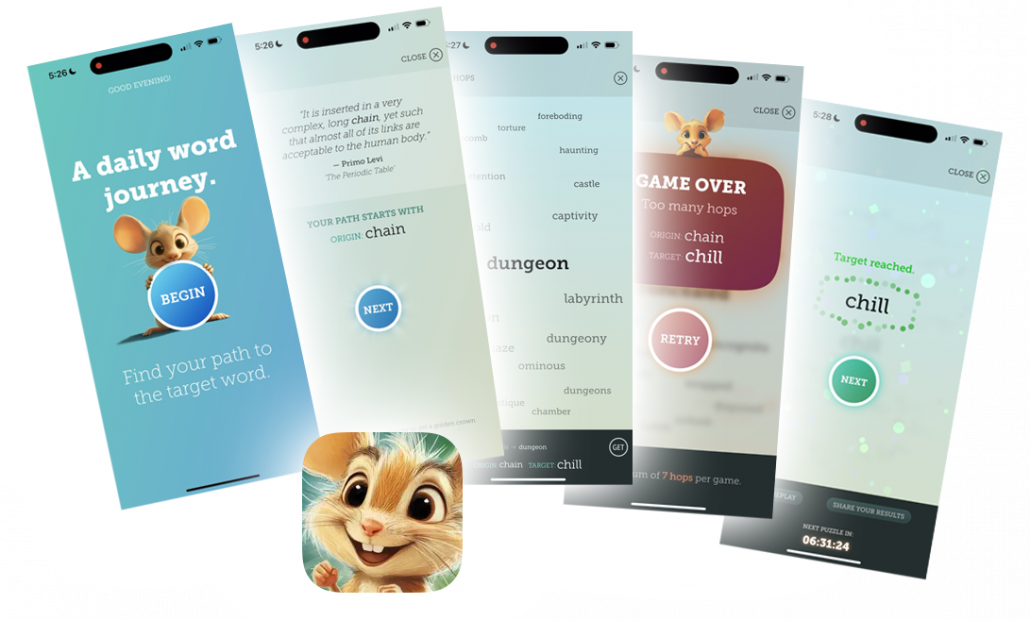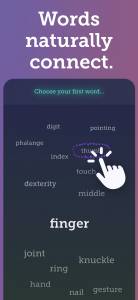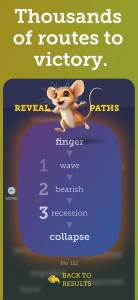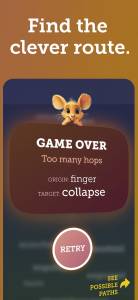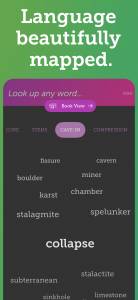Community Embraces New Word Game at Mid-Year Play Day This past Sunday, families at Takoma Park’s Seventh Annual Mid-Year Play Day had the opportunity to experience OtherWordly for the first time. Our educational language game drew curious children and parents to our table throughout the afternoon. Words in Space Several children gathered around our iPads […]
Read moreEvery daily challenge in In Other Words presents a simple proposition: connect two seemingly unrelated words by navigating through clouds of meaning. Yet within this simplicity lies profound complexity—over a million ways to win, but 400 million ways to lose. This isn’t about discovering hidden connections; it’s about navigating the semantic network that already exists in language, making visible and playable what has always been there.
Get it today for iOS. Learn more at www.inotherwords.app
Two Experiences in One App
In Other Words is available now as a free iOS app that delivers two distinct experiences:
- The Daily Puzzle Game: Navigate from one word to another through semantic connections (free twice weekly, daily with subscription)
- The Complete Reference Tool: A permanent, free mega-thesaurus with 1.5 million words and 100 million relationships—no gameplay required
The reference mode lets you explore the entire Linguabase at your own pace. Look up any word to see its connections, browse through layers of meaning, discover related concepts, and dive down rabbit holes of associations. This isn’t a limited trial or stripped-down version—it’s the complete semantic network, permanently free for everyone.
Game Mechanics & Gameplay
At its core, the daily puzzle presents players with two words—a starting point and a destination. Between them lies semantic space, navigated through clouds of 17 related words that shift with each choice. Players might connect “soldier” to “gentle” through: soldier → uniform → blouse → delicate → gentle. Or they might find an entirely different route through the same linguistic landscape.
The game offers up to 7 hops to find your solution, though elegant 3-hop paths exist for those who spot them—a few dozen clever routes hidden among 17³ (4,913) possible combinations. At the full 7 hops, players can discover their unique route among over 300 million possible paths.
Homographs and polysemes serve as natural bridges in this landscape. Words like “bass” (the fish) and “bass” (the low sound) or the multiple meanings of “head” don’t create shortcuts—they offer creative routing options for navigating semantic space.
Language as a Network
Our research in building and analyzing a massive semantic network of 1.5 million words and 100 million weighted relationships confirmed language’s “small world” property: 76% of random English word pairs connect in seven hops or fewer, with an average path length of just 6.43 steps.
We built this network to encompass not just synonyms but categorical relationships (apple → fruit), functional connections (apple → orchard), and cultural associations (apple → pie). From trillions of possible word pairs, we identified puzzles where multiple elegant 3-hop solutions exist, crafting daily challenges around these discoveries.
The Experience of Idea-Linking Games
In Other Words makes a sport out of lexicographic information, drawing users down a rabbit hole of related words that lead to new insights. We’ve pioneered “idea-linking games”—where language’s natural connections become playable paths.
Unlike spelling-based word games, semantic navigation reflects how language actually works. When searching for a word, you don’t think about letters—you think about meaning, context, and associations. The game mirrors this natural process, with just 17 choices at each step revealing millions of existing paths through language.
Players recognize pathways that were always there. The “aha” moment comes from seeing how naturally “metal” flows to “flavor” through tensile → material → ingredient. What might seem like failure—taking a path that doesn’t reach the target—is actually exploration, building intuition for how meaning flows and branches.
The daily ritual brings a new corner of language’s network to navigate, while sharing solutions reveals how differently minds traverse the same semantic landscape. The clean interface and family-safe default (with optional adult content unlock) make it accessible to all.
Free Reference Tool
Independent of gameplay, In Other Words includes a complete thesaurus and reference tool—permanently free for all users. This full-fledged word exploration system rivals any commercial thesaurus.
Those “tip-of-your-tongue” moments become navigable—start from related concepts and follow connections until you find that elusive word. Dynamic word clouds simulate the brain’s associative thinking, leading to precise and meaningful language choices.
The app includes over a million real-world examples from Pulitzer Prize winners, popular fiction like Harry Potter and To Kill a Mockingbird, non-fiction works like Freakonomics, the New York Times, and peer-reviewed academic papers. These show how authors, journalists, and scholars actually use words in context.
The app delivers 2,700 short, digestible definitions which our lexicographer handcrafted for common words like “who,” “what,” and “the.” In addition to dictionary-style lists of word senses, we provide short, easily readable descriptions for every single word.
Reference features include:
- Word families: Understanding morphological patterns (jump/jumping/jumped)
- Common usage patterns: Revealing collocations like “beautiful woman” vs “handsome man”
- Curated thematic lists: Types of balls, types of insects, words for nausea, kinds of needlework
- Wordplay patterns: Anagrams, shared letter patterns (earthworm/earthquake), rhymes, and phonetic relationships
The Power of Active Vocabulary
Consider the vocabulary gap: a typical third grader knows 10,000 words. By age 20, a non-reader stalls at around 12,000 words, while a prolific reader commands over 26,000. But vocabulary size isn’t everything. Suzanne Collins created The Hunger Games with just 8,000 unique words; Shakespeare wrote Hamlet with only 5,000. Fluency—knowing which word to use when—matters more than raw vocabulary.
In Other Words helps shift words from passive recognition to active use. When you see a word connected to familiar concepts and used in real sentences, it becomes part of your working vocabulary. The confidence gained from navigating semantic space transfers to clearer communication and more precise expression in everyday life.
Writers use the visual connections to overcome creative blocks. Language learners gain intuitive understanding of how English naturally connects concepts. Educators demonstrate language structure through interactive exploration. The game rewards curiosity and different thinking styles equally.
Comparison with Other Semantic Games
In Other Words takes a fundamentally different approach from other semantic games:
- Navigation vs. guessing: Unlike Semantle (finding a hidden word through similarity scores), we show connections upfront
- Pathfinding vs. grouping: Different from NYT’s Connections (finding 4-word groups), we’re about journeying between any two points
- Open exploration vs. deduction: Unlike Codenames (deducing associations from clues), players chart their own course
- Visible network vs. hidden relationships: Games like Red Herring hide connections; we display them as navigable choices
- Multiple solutions vs. single answer: Most semantic games have one solution; we celebrate the many paths inherent in language


